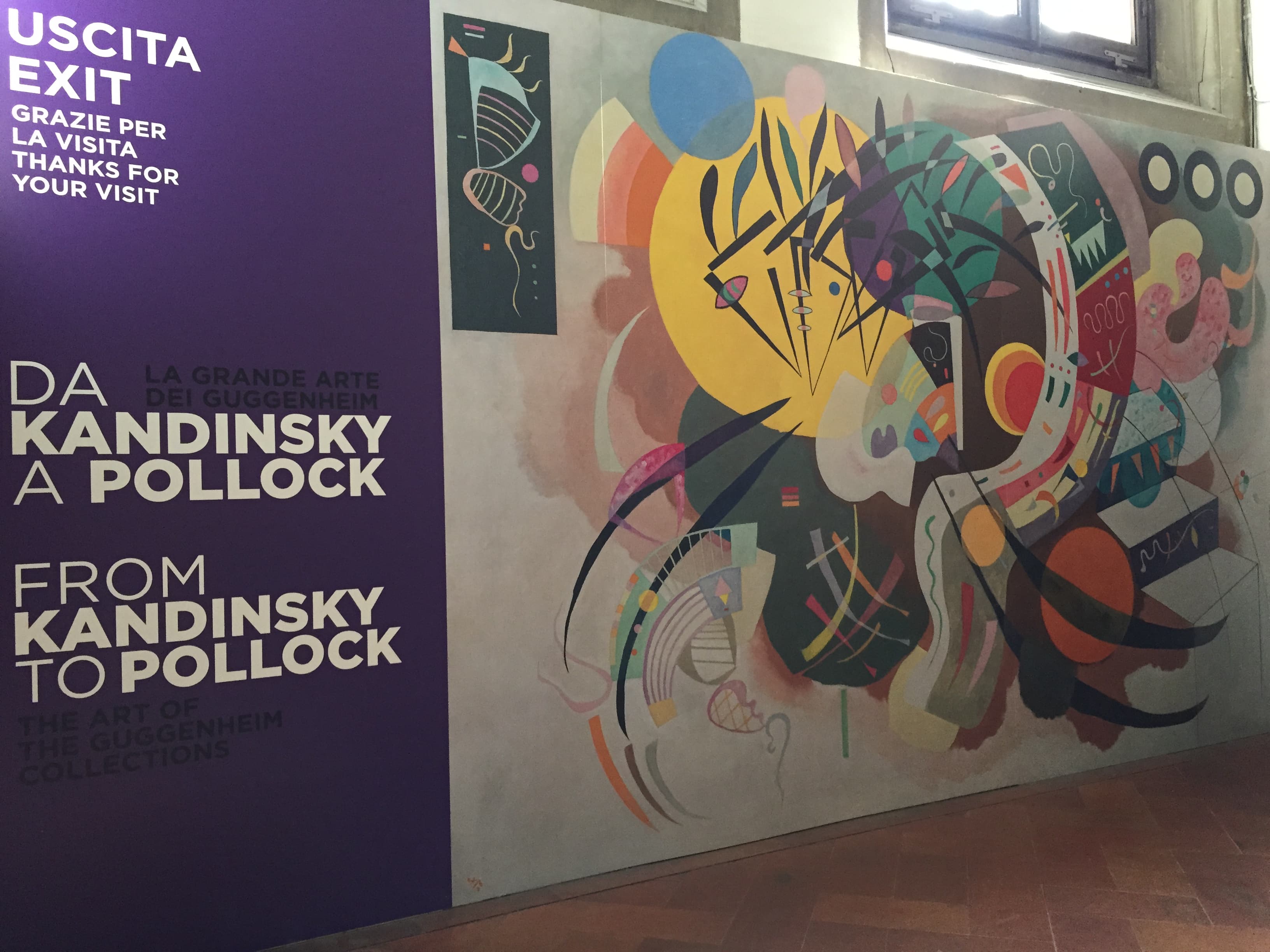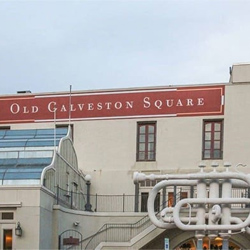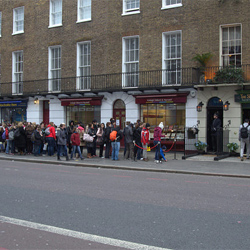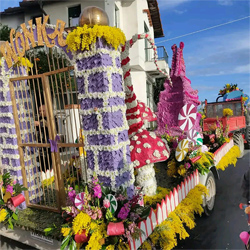
- 2016.06.07
- From Kandinsky to Pollock…Masterpieces on Exhibit from the Guggenheim
Right now, over 100 pieces from the Guggenheim collection are on exhibit at Palazzo Strozzi in Florence, Italy. Masterpieces from Europe and America dating from the 1920s to 1970s that were owned by the American collectors of artwork, Peggy and Solomon Guggenheim, are on display. Having heard about it, I wasted no time going to see it.There is a Guggenheim Museum in New York and Venice, but I had yet to visit, so I was quite excited to go. The artwork on exhibit isn’t a collection of classics, such as from van Gogh and Renoir, but of contemporary art from the 1900s. There are lots of paintings and sculptures from famous artists that are also well known in Japan. I really enjoyed seeing them.When I hear the words, contemporary art, I typically think of artists like Picasso, Kandinsky and Pollock, but I really took an interest in the works of Marcel Duchamp, one of the pioneers of contemporary art. He was catapulted into fame with his piece titled, “Fountain,” which was a urinal widely sold at the time that he signed. In an era when art was beautiful and appealing for a sense of originality and being unique in the world, Duchamp declared that the urinal, which certainly can’t be called beautiful and is an ordinary, mass-produced item, was a work of art. His extraordinary way of thinking went beyond the norms of that time, and it’s said that his artwork was highly valued.His work attracted many museum visitors and I could sense how popular it was. Unfortunately, the signed “Fountain” wasn’t on exhibit, but I was happy to see “L.H.O.O.Q.” (Mona Lisa drawn with a moustache and beard) and miniature replicas of his works displayed in a box that included a small urinal.I also enjoyed the wonderful use of color and composition in the Composition Series from Kandinsky, a representative abstract expressionist painter. Works from other artists like Jackson Pollock and Mark Rothko were all individualistic. When Rothko first started out, his artwork was viewed as lazy, and at one point he was even fired, but he continued to work on color. Later, critics were to say his artwork “presents the true value of color.” Rothko began writing a book on the similarities between children’s artwork and modern art. He wrote, “Child art transforms itself into primitivism, which is only the child producing a mimicry of himself.” He also said, “The fact that one usually begins with drawing is already academic. We start with color.”Though I don’t have a deep understanding of art, I visit museums and am moved each time I see pieces from so many artists. When I view artwork, I find myself standing still for a while and unable to move away. Art truly is wonderful.When I first came to Florence, I originally intended to study art, not to be a sommelier. I had time when I was a student, so when I wasn’t studying about wines I often went to museums. I’ve had fewer chances to go since starting work, but from now on I’d like to make time for it even if I have to squeeze it into my schedule.The current exhibit at Palazzo Strozzi in Florence continues until July 24th. If you live nearby or are in Florence during that time, why not go see it for yourself?
The artwork on exhibit isn’t a collection of classics, such as from van Gogh and Renoir, but of contemporary art from the 1900s. There are lots of paintings and sculptures from famous artists that are also well known in Japan. I really enjoyed seeing them.When I hear the words, contemporary art, I typically think of artists like Picasso, Kandinsky and Pollock, but I really took an interest in the works of Marcel Duchamp, one of the pioneers of contemporary art. He was catapulted into fame with his piece titled, “Fountain,” which was a urinal widely sold at the time that he signed. In an era when art was beautiful and appealing for a sense of originality and being unique in the world, Duchamp declared that the urinal, which certainly can’t be called beautiful and is an ordinary, mass-produced item, was a work of art. His extraordinary way of thinking went beyond the norms of that time, and it’s said that his artwork was highly valued.His work attracted many museum visitors and I could sense how popular it was. Unfortunately, the signed “Fountain” wasn’t on exhibit, but I was happy to see “L.H.O.O.Q.” (Mona Lisa drawn with a moustache and beard) and miniature replicas of his works displayed in a box that included a small urinal.I also enjoyed the wonderful use of color and composition in the Composition Series from Kandinsky, a representative abstract expressionist painter. Works from other artists like Jackson Pollock and Mark Rothko were all individualistic. When Rothko first started out, his artwork was viewed as lazy, and at one point he was even fired, but he continued to work on color. Later, critics were to say his artwork “presents the true value of color.” Rothko began writing a book on the similarities between children’s artwork and modern art. He wrote, “Child art transforms itself into primitivism, which is only the child producing a mimicry of himself.” He also said, “The fact that one usually begins with drawing is already academic. We start with color.”Though I don’t have a deep understanding of art, I visit museums and am moved each time I see pieces from so many artists. When I view artwork, I find myself standing still for a while and unable to move away. Art truly is wonderful.When I first came to Florence, I originally intended to study art, not to be a sommelier. I had time when I was a student, so when I wasn’t studying about wines I often went to museums. I’ve had fewer chances to go since starting work, but from now on I’d like to make time for it even if I have to squeeze it into my schedule.The current exhibit at Palazzo Strozzi in Florence continues until July 24th. If you live nearby or are in Florence during that time, why not go see it for yourself?




























































